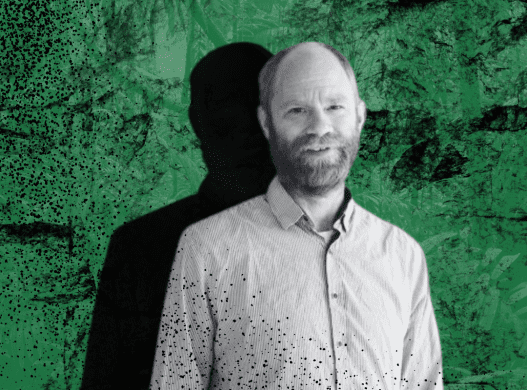Af Sundeep Radesh, U-landsnyt.dk
Ifølge beregninger er Indien på vej til at blive verdens tredje største økonomi med gode investeringsmuligheder i bl.a. infrastruktur. En nylig konference ”Global Business in India” satte fokus på, hvordan danske virksomheder kan udnytte dette.
According to PricewaterhouseCoopers, the already big and ever growing Indian economy is a gold mine for engineering and construction (E&C) companies and estimate that India will become the third largest economy in the world by 2050.
Liberalisation of government regulations and a deliberate strategy on the part of the Indian Government to promote infrastructure throughout the vast country, present excellent opportunities, with roads and highways, ports and airports, railways and power standing out as particular bright spots, with staggering sums of investment planned.
Public private partnerships (PPPs) are gaining in importance, and are benefitting from government support – targeted PPP participation is 150 billion US dollars. Companies experienced in structuring these types of deals should be able to use their expertise to good effect in the Indian marketplace.
Indeed Danish companies should feel welcome with few restrictions on foreign direct investment (FDI) for infrastructure projects, tax holidays for developers of most types of infrastructure projects, some of which are of limited duration and opening up of the infrastructure sector through PPPs.
Konferencen
The conference ” Global Business in India” was held in collaboration with EKF (Eksport Kredit Fonden), IFU (Investeringsfonden for Udviklingslande) and Greenhouse Capital Region on the 31st October 2014 in Copenhagen.
Kultur som barriere
At the Conference on Danish Companies doing business in India a Mentor from Copenhagen Business School asks:
“I have highly qualified students, they are black belts in CSI, IT, Lean and I don’t know what, the problem is that they seem to think that there is a lack of interest when they apply to these companies. Why is it so difficult for foreigners to get in?”
The speaker, from the senior management of a Danish company smiles, “Good question, I’m not sure I can answer that one. I just had an interesting discussion with a guy who is trying to head-hunt exactly them. I guess Danish companies do things the Danish way, many times what we see in our foreign operations is we employ local management and we simply speak a parallel language.
They don’t understand the Danish model and we don’t understand the local model. So basically we start off by employing a Danish boss, that understands how Danish business is run.
And then after a while when this culture has ruled in the company then we will change to a local management, because then this local will know how to do it the Danish way. And on the other hand we hire people from abroad to come to Denmark to get under the skin of the Danish mentality, and send them back to their original country.
Why we don’t think on these terms, I can’t answer that. But it is a good question”.
This was just some of the interesting dialogue with regards to collaboration avenues that took place at the conference.
IFU: potentialet er uforløst
Among the presenters were Deepa Hingorani, Regional Director for South Asia, IFU.
For years now India has offered Danish companies with great business opportunities, but the tone generally focussed on the fact that the potential is so much greater than what is in the works right now. With an expected GDP growth of 6.5% in 2015, an ever increasing middle class in a population of 1.3 billion, and new government desperate to invest in infrastructure, availability of a workforce, the opportunities are there for the taking.
As Ms Hingorani put it in her presentation, infrastructure like roads and ports, housing, energy – including renewables, solid waste management, railways – Food & Agricultural business, consumer goods and related industries such as packaging, engineering services and IT, are spheres available for those willing to ask for their share of the pie.
Rambøll og joint ventures i Indien
Søren Holm Johansen, Group Executive Director, Markets and Global Practices, Ramboll – a company with huge operations in India also presented some interesting findings.
For example Larsen & Toubro registered 13.6 billion US dollars revenue in 2013, and was ranked as 10th best Indian brand. Ramboll in India is working with transport giant, Scania, to develop a state-of-the art 22,000 m2 Product Centre in Bangalore to strengthen its global setup.
Ramboll has provided all services, including architectural, civil, structural, mechanical, electrical and plumbing as well as project management. Phase 1 is operational since Oct 2014 and Phase 2 will be completed in early 2015. But more importantly he had some important lessons about joint ventures that he wanted to share.
Joint ventures he contended were the way to go. This provides capital, market position, client base and brand and is a strong model for getting a firm foothold. But one must have a clear strategic fit and a clear exit plan as a joint venture can develop into a constraint on growth in the long term. The key factors that caught him were the fact that incomes will quadruple in the coming decade, investments in 5-year plans will double, investments in infrastructure will be geared to manage urban solid waste, and Indian businesses will be investing more globally, a sort of inward and outward investment, tourism and migration. Ramboll, he said, will focus on infrastructure and global engineering.
Indien attraktiv for udenlandske investeringer
Ernst & Young’s 2014 India attractiveness survey found that India remains one of the top global destinations for foreign investment, with its main drivers being its solid domestic market, an educated workforce and competitive labour.
In 2012 it accounted for 5.5% of global FDI – the fourth-largest recipient of FDI in terms of projects. Although the number of jobs declined slightly in 2012 (due to a drop in industrial projects). India still accounts for 9.4% of jobs created by FDI around the world.
According to the survey “the US invested the most in India, with 30.2% of projects, followed by Japan with 10.4%. Seven of the top 10 investors in India during 2007-12 were from Western Europe, led by the UK and followed by Germany and France.
India’s pool of business partners is growing, with a striking 123.3% rise in the number of projects from the Middle East in 2012, mostly in financial services. Southeast Asian countries are also expanding their investment in the country, with projects mainly originating from Singapore, Malaysia and Thailand.”














